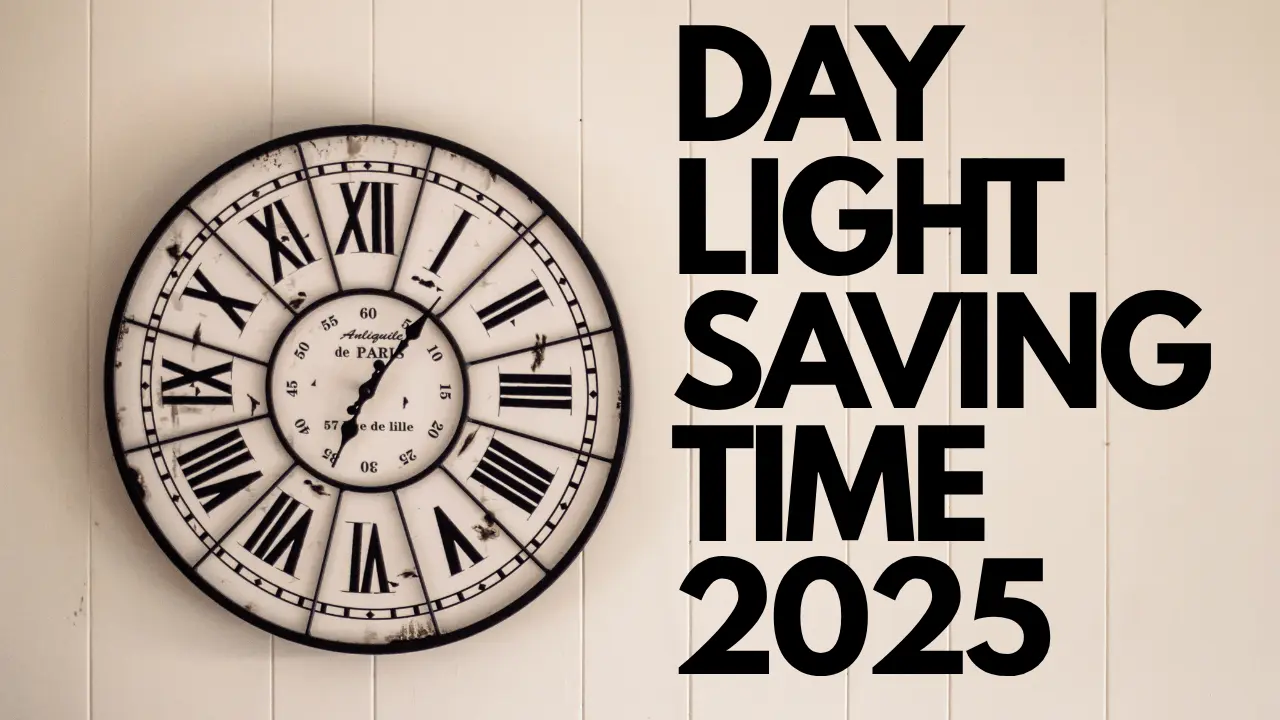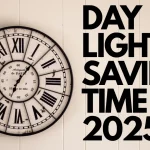As the crisp autumn air settles in and the days grow shorter, a familiar ritual approaches: the end of Daylight Saving Time (DST). In 2025, this transition will occur on Sunday, November 2, at 2:00 a.m. local time, when clocks will “fall back” one hour. This change marks the return to Standard Time for most of the United States.
Understanding Daylight Saving Time
Daylight Saving Time (DST) is the practice of setting clocks forward by one hour during the warmer months to extend evening daylight. This adjustment aims to make better use of daylight during the longer days of spring and summer. The concept was first proposed by Benjamin Franklin in 1784 and was later adopted by various countries to conserve energy and make better use of daylight.
In the United States, DST was officially implemented during World War I to conserve fuel. After a period of discontinuation, it was reintroduced during World War II and has been observed in various forms since then. The current schedule, which begins on the second Sunday in March and ends on the first Sunday in November, was established by the Energy Policy Act of 2005 and implemented in 2007.
Why the Date Varies Each Year
The end date for Daylight Saving Time varies each year because it is tied to the first Sunday in November. Since the date of the first Sunday changes annually, the end of DST shifts accordingly. In 2025, the first Sunday in November falls on November 2, making it the day when clocks will fall back one hour.
What Happens When Clocks Fall Back
When DST ends, clocks are set back one hour at 2:00 a.m. local time. This means that 2:00 a.m. becomes 1:00 a.m., effectively giving most people an extra hour of sleep. This shift also results in earlier sunrises and sunsets, making mornings brighter and evenings darker.
While the immediate effect is an extra hour of sleep, the change can have various implications for daily routines, energy consumption, and health.
The Debate Over Daylight Saving Time
The practice of changing clocks twice a year has been a topic of debate for many years. Proponents argue that DST helps to conserve energy, reduces traffic accidents, and provides more daylight for outdoor activities. Opponents contend that the benefits are minimal, and the biannual clock changes disrupt sleep patterns and can have negative health effects.
In recent years, several states have introduced legislation to make DST permanent. For instance, Texas passed a law aiming to adopt year-round DST, creating what would be known as “Texas Time.” However, this law will not take effect unless the U.S. Congress allows permanent DST nationwide. Currently, only Hawaii and most of Arizona do not observe DST, as they have opted out under the Uniform Time Act.
Health Implications of the Time Change
The transition into and out of Daylight Saving Time has been associated with various health effects. Studies have shown that the shift can lead to disruptions in sleep patterns, increased risk of heart attacks, and other health issues. For example, a study conducted by researchers at Stanford University found that abolishing DST and adopting permanent standard time could prevent over 300,000 strokes and more than 2 million obesity cases annually. The research suggests that permanent standard time imposes the least circadian burden compared to permanent DST or the current biannual clock changes.
Sleep experts and organizations like the American Academy of Sleep Medicine advocate for adopting standard time year-round, citing the alignment with natural sunlight and promoting healthier sleep patterns.
Key Differences Between Daylight Saving Time and Standard Time
Here is a comparison of the main characteristics of Daylight Saving Time and Standard Time:
| Feature | Daylight Saving Time (DST) | Standard Time |
|---|---|---|
| Time Change | Clocks are set forward by one hour | Clocks are set back by one hour |
| Duration | Second Sunday in March to first Sunday in November | First Sunday in November to second Sunday in March |
| Sunrise and Sunset Times | Later sunsets, earlier sunrises | Earlier sunsets, later sunrises |
| Daylight Hours | Extended evening daylight | Shorter daylight hours in the evening |
| Impact on Sleep | Disrupts sleep patterns due to clock shift | Adjusts to natural sunlight, promoting better sleep |
| Energy Consumption | Potentially reduces energy consumption in evenings | Less evening daylight leads to higher energy consumption for lighting |
| Health Effects | Increased risk of heart attack and stroke due to sleep disruption | More consistent sleep patterns, aligned with natural light |
| Global Adoption | Used by many countries, especially in North America and Europe | Used in most parts of the world, especially outside DST-observing regions |
Preparing for the Time Change
To minimize the impact of the time change, consider the following tips:
-
Adjust Sleep Schedule Gradually: In the days leading up to the time change, try going to bed and waking up 15 minutes earlier each day to help your body adjust.
-
Create a Restful Environment: Ensure your bedroom is conducive to sleep by keeping it cool, dark, and quiet.
-
Limit Screen Time Before Bed: Avoid electronic devices at least an hour before bedtime, as the blue light emitted can interfere with sleep.
-
Stay Active During the Day: Engage in regular physical activity to promote better sleep quality.
-
Be Mindful of Diet: Avoid large meals, caffeine, and alcohol close to bedtime.
By taking these steps, you can help your body adjust more smoothly to the end of Daylight Saving Time.
Conclusion
The end of Daylight Saving Time on November 2, 2025, marks a return to Standard Time for most of the United States. While the immediate effect is an extra hour of sleep, the transition can have various implications for daily routines, energy consumption, and health. As the debate over the necessity and impact of DST continues, it’s important to stay informed and make adjustments that promote well-being during this time of change.
Whether you view the end of DST as a welcome change or a disruption, understanding its effects and preparing accordingly can help you navigate the shift with ease.









Leave a Comment